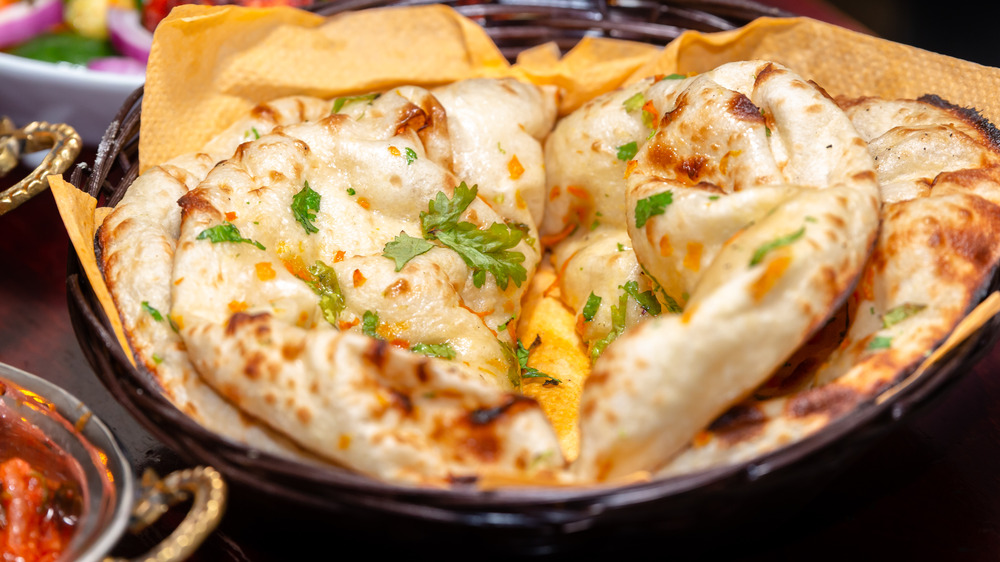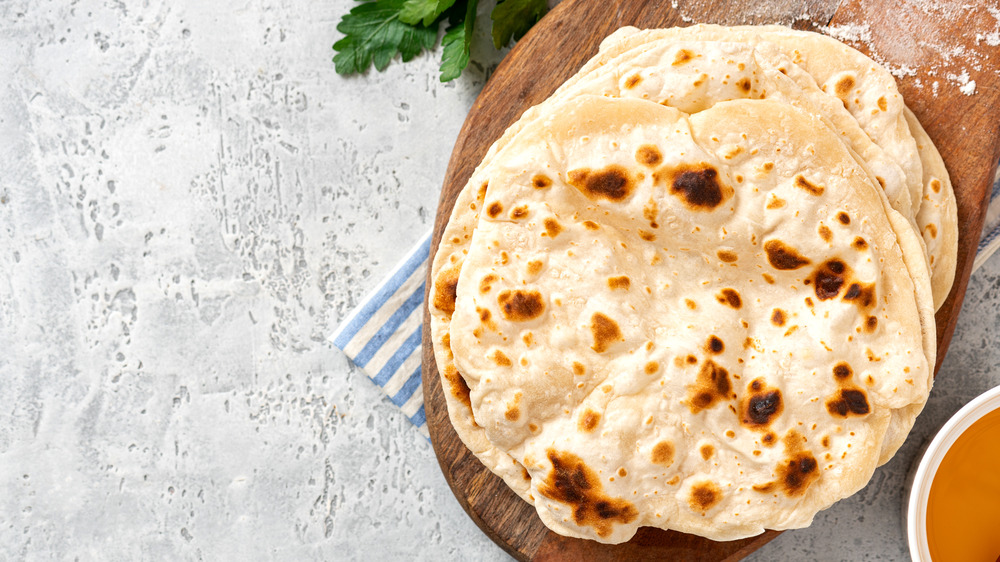The Real Difference Between Naan And Roti
Flatbreads are known to be the perfect vessel due to their immense versatility. The Spruce Eats notes that flatbread can be traced back to the ancient Egyptians, despite places like Afghanistan, India, the Americas, and Italy all having their own version of it. According to Brit+Co, you can top it with pastrami, hummus, lamb, and even grilled zucchini — the possibilities are endless.
Over the centuries, different cultures and countries have cooked up their own takes on flatbreads. In Mexico, they munch on the tortilla, while in countries like India, they will have flatbreads like naan. While India is known for its varied cuisine, with even more culinary distinctions between Northern Indian and Southern Indian dishes (per Food52), flatbreads are a more common meal occurrence in Northern Indian cities. You'll find bread like chapati, roti, and naan as a go-to side, according to Eat Your World. While roti and chapati may be similar, naan is vastly different from the two, and each flatbread is served with distinct types of dishes.
Where roti is thin like a tortilla, naan is pillowy like a dinner roll
While rice is the common side dish in Southern India, roti is the common side in Northern India, per Taste of Home. Roti, the publication cites, is made using whole wheat flour and a cooking tool called a tawa (think griddle). Naan, on the other hand, is made using either all-purpose flour, whole wheat flour, or a mixture of both, Taste of Home details. Naan is also made in a large clay oven called a tandoor.
Because of their differing ingredients, folks will find that naan has a thicker and chewier texture when compared to roti (which is fairly thin and flat), according to Recipe Marker. This is because naan is a leavened flatbread, while roti is an unleavened flatbread. Another difference between the two is that roti can be considered vegan bread, while naan generally cannot. Naan would technically be classified as more of a vegetarian bread due to the dairy that is used to make it (via Recipe Marker).

